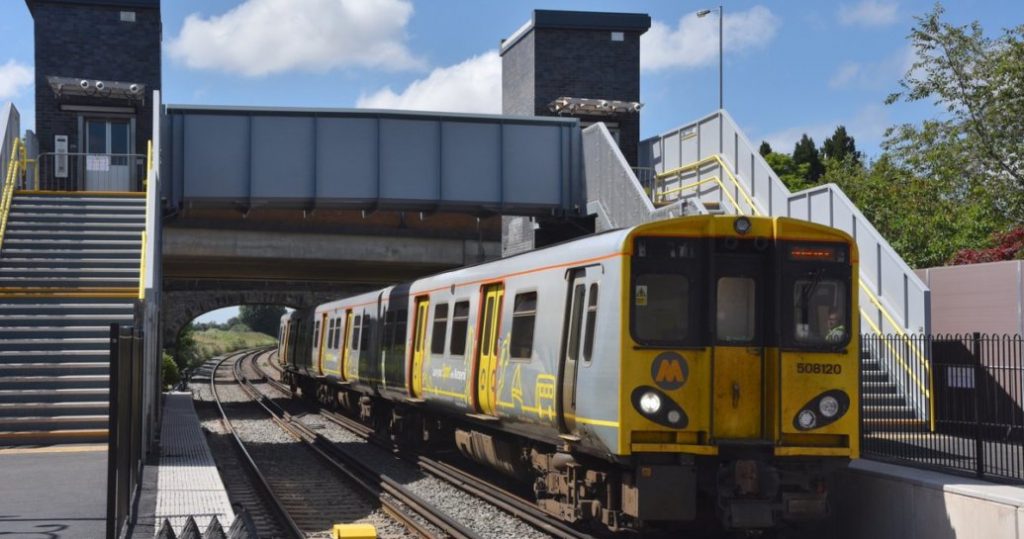There are endless stories on the railway, from providing better services for passengers and freight operators to raising safety awareness.
Here are 10 of the most read this year:
1 – Why rails buckle in Britain
Why don’t rails get hot in Europe? The truth is they do.
However, in countries typically hotter than ours, rails are stressed to withstand higher temperatures.
Hot weather can cause a great deal of disruption to the railway so Britain’s rails are pre-stressed to help them resist high temperatures. Our rails have a stress-free temperature of 27 degrees – the UK mean summer rail temperature. Other countries choose different temperatures depending on their climate…
2 – Signals explained
Upgrades to signalling and train control systems feature strongly in our improvement works and are part of our ongoing plans to install modern technology to improve services for passengers and freight operators.
Signalling is a crucial part of the railway infrastructure, enabling trains to move safely around the network. But how does it work and what role does it play in delays…?
3 – Network Rail takes devolution to the next level
Putting passengers first and creating a more customer focussed, service driven organisation is at the heart of operational changes announced by Network Rail today
The new operating model will be formed of 13 routes increased from the current eight, supported by five Network Rail regions, two service directorates and smaller teams at the centre. Each region will be led by a managing director.
It’s a model that ensures Network Rail is more aligned to passenger and train operators, enabling a more cohesive and joined-up railway…
4 – You vs Train: the third rail
The railway is full of hidden dangers – if you don’t get hit by a train, the electrified third rail could kill you.
The third rail – which powers electric trains and is mostly found on tracks in the South East of England – carries 750 volts.
However, research shows a large proportion of young people remain unaware of its potentially fatal dangers.
Watch the new You vs. Train film about the third rail…
5 – Meet London Waterloo’s longest serving member of staff
To mark Waterloo station’s 170th birthday on July 11, Network Rail and South Western Railway reveal the man believed to be Britain’s longest-serving member of railway staff.
Don Buckley, 79, joined Waterloo’s station team in 1953 aged just 14. Due to start a job as a messenger at London Euston, Irish-born Don mistakenly ended up at Waterloo after asking a taxi driver to take him to the big station in the capital.
He remains working there today, more than 65 years later…
6 – Why can’t normal train services run on snow and ice?
Preparing for winter is a crucial task at Network Rail.
We work hard throughout the season to minimise delays but ice and snow present unique challenges to the network.
Low temperatures can cause points – movable sections of track that allow trains to move from one line to another – to freeze, stopping trains from accessing certain routes or platforms…
7 – How fast can we build a railway station?
Network Rail is making it easier for third parties to invest in Britain’s railway.
On 30 January, Harriet Hepburn, corporate finance and business development director at Network Rail, spoke to delegates including representatives from investors, the government and the broader rail sector to explain how we’re improving the investment process.
More funding from third parties will enable additional improvements to the network, which will benefit passengers and the economy.
Maghull North railway station – funded by the government’s Local Growth Fund (LGF), transport executive Merseytravel and the Homes and Communities Association – is an example of the initiative. It opened in June 2018 after just nine months of construction and was the first additional station on the Merseyrail network in 20 years…

8 – Five things you didn’t know about our winter fleet
It takes a special fleet to keep passenger trains moving in snow and ice.
Our seasonal track treatment vehicles and machines are ready at depots across Britain for deployment where needed.
Here are five things you didn’t know about our winter fleet…

9 – Why does Network Rail close level crossings?
We closed Britain’s busiest foot crossing last year in a milestone for a closure programme.
In February last year, we replaced Dean Farm crossing in Salfords, Surrey, with a £1.5m footbridge, keeping families safe from 90mph trains.
The crossing was Britain’s busiest in terms of the number of trains travelling over it, at more than 760 a day.
The new footbridge, over the Brighton Main Line, has improved safety for residents, including children from a nearby primary school…
10 – Station spotlight: Manchester Piccadilly
Greater Manchester has been an integral part of The Great North Rail Project – multi-billion pound improvements in the north of England.
We’ve made a string of upgrades to its busiest station – Manchester Piccadilly – to improve the overall experience for passengers…